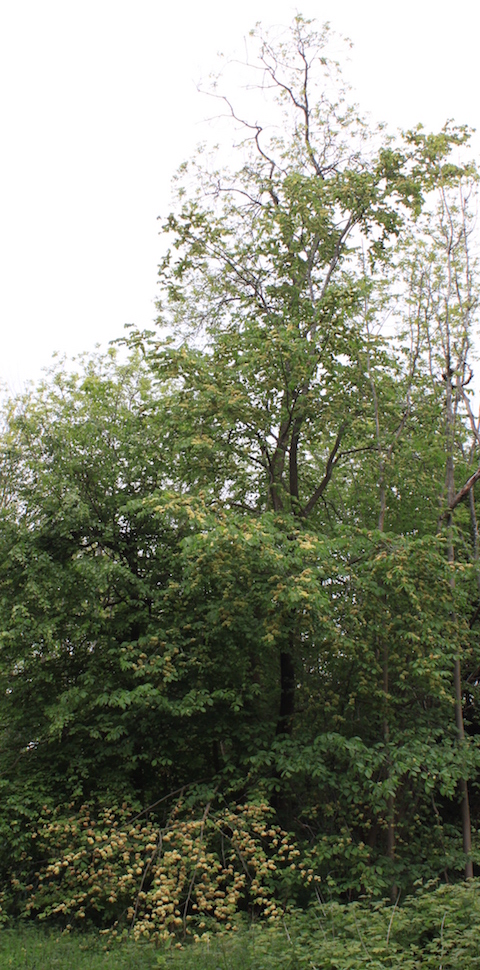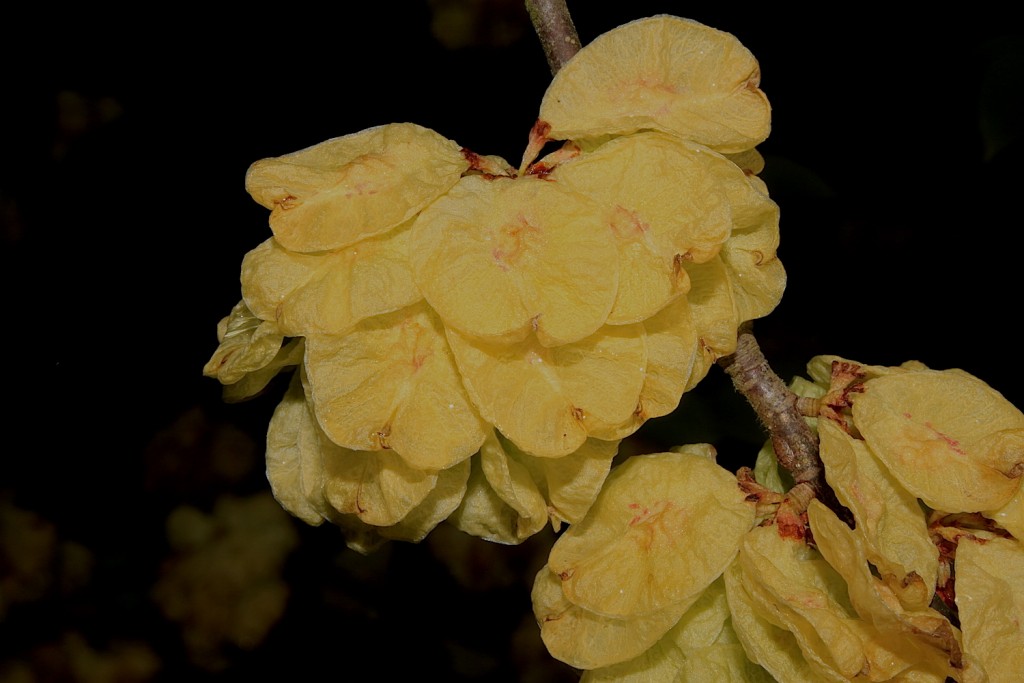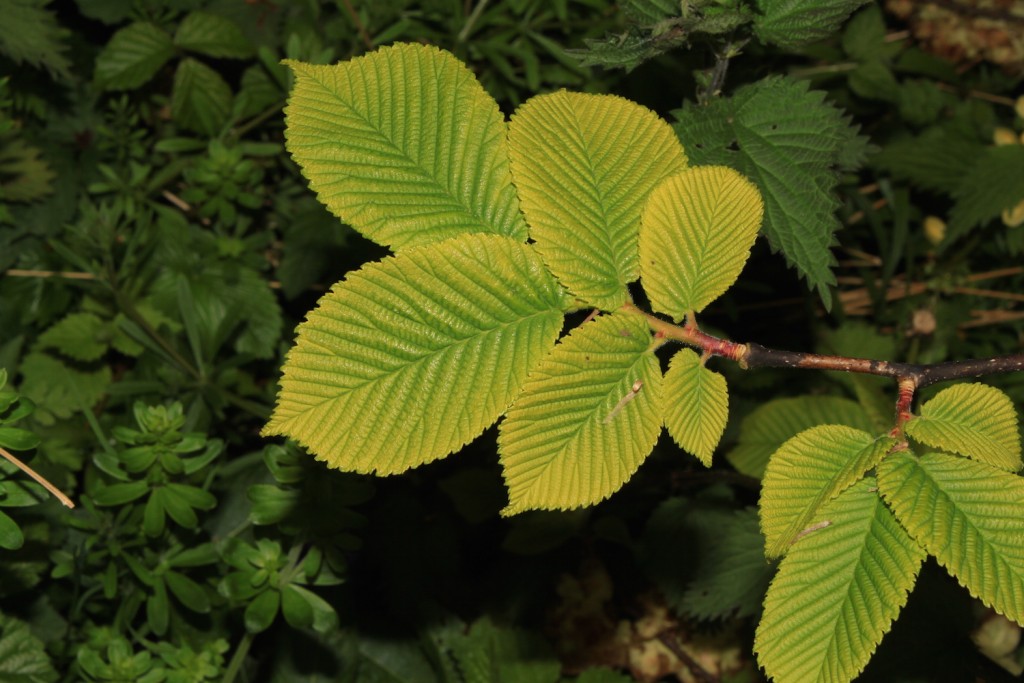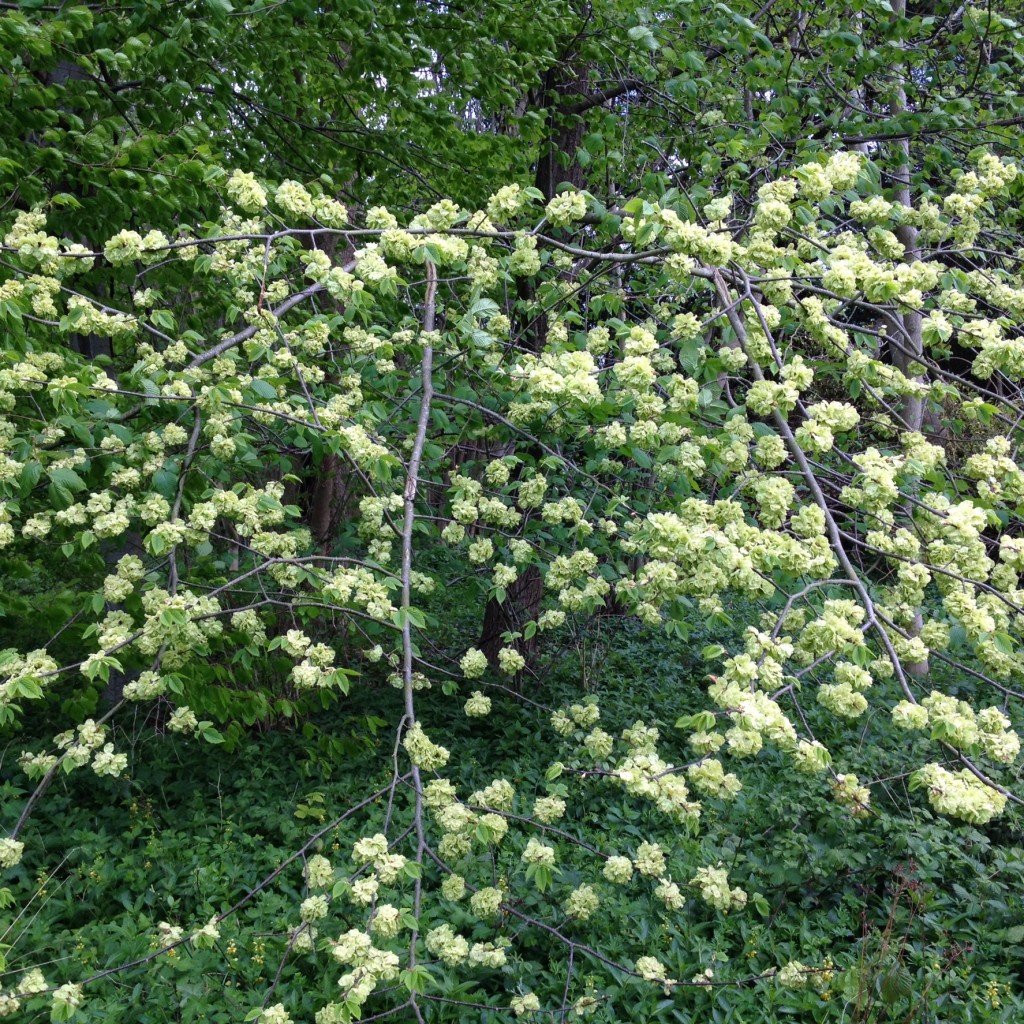 Abraham Lincoln
If given the truth, the people can be depended upon to meet any national crisis...
Abraham Lincoln
If given the truth, the people can be depended upon to meet any national crisis...
 Guildford news...
for Guildford people, brought to you by Guildford reporters - Guildford's own news service
Guildford news...
for Guildford people, brought to you by Guildford reporters - Guildford's own news service
Dragon Reader Asks: Is This A Wych Elm Or Which Elm Is It?
Published on: 17 May, 2015
Updated on: 18 May, 2015
By Harry Eve
Many think that elm trees are a part of the part of the pre-Dutch elm disease past, but Guildford Dragon Reader Harry Eve noticed a wych elm near West Horsley. Well he believes it is, subject to confirmation, and agreed to share it with others. All photos by Harry Eve or his neighbour.
Here are a couple of photos of the wych elm that I saw at The Sheepleas a few days ago.
I was alerted to it by a neighbour and I think it is unusual, nowadays, to find one mature and large enough to produce so much fruit.
I am aware that some hybrid disease-resistant elms have been planted and they might look very similar to wych elm – so if any tree experts are reading this perhaps they could confirm whether it is this species.
If anyone else has seen wych elms locally, in flower or fruit, this spring then please let me know via the “Leave a Reply” feature below.
Wych elm facts*:
Wych elm is a deciduous broadleaf tree native to the UK and much of Europe.
It usually grows in hilly or rocky woodlands, or beside streams and ditches. It is hardier than the English elm (Ulmus minor var. vulgaris), so is found much further north and west, and in parts of Scotland. Despite the English elm’s name, wych elm is the only elm that is regarded as being truly native to Britain and is sometimes called Scots elm. Thanks to Dutch elm disease, wych elm is now found very infrequently.
Wych elm is hard to tell apart from English elm. The bark is smooth and grey when young, becoming grey-brown and fissured after 20 years. Twigs are dark grey and covered in coarse hairs, and leaf buds are hairy, purple-black and squat in shape. Leaves are toothed, and at 7-16cm in length, they are larger than those of any other native tree. They have a characteristic asymmetrical base and taper to a sudden point at the top.
Flowers appear before the leaves in early spring. They are red-purple in colour, and appear in clusters of 10 to 20, spaced out along the twigs and small branches. Elms are hermaphrodite, meaning that both male and female reproductive parts are contained within each flower. One pollinated by wind, flowers develop into small, winged fruits known as samaras. These are dispersed by wind.
Mature trees can grow to a height of 30m.

Harry’s wych elm, if that is what it proves to be, has a way to go before it reaches its maximum height of 30metres.
Before metal was widely available, many English towns had elm water mains, including Bristol, Reading, Exeter, Southampton, Hull and Liverpool.
Many birds eat elm seeds and the leaves provide food for the caterpillars of many moths, including the peppered, light emerald and white spotted pinion moths. Caterpillars of the white letter hairstreak butterfly feed on elms and the species has declined dramatically since Dutch elm disease arrived in the UK.
Elms used to be associated with melancholy and death, perhaps because the trees can drop dead branches without warning. Elm wood was also the preferred choice for coffins. In Lichfield it was the custom to carry elm twigs in a procession around the Cathedral Close on Ascension Day, then to throw them in the font.
Elm wood is strong and durable with a tight-twisted grain, and is resistant to water. It has been used in decorative turning, and to make boats and boat parts, furniture, wheel hubs, wooden water pipes, floorboards and coffins.
Along with English elm, wych elm is highly susceptible to Dutch elm disease, a fungal disease which devastated populations of elms since it arrived in the UK in the 1960s.
Elms can also be affected by galls from aphids, which migrate from fruit cultivated trees.
*Taken from The Woodland Trust website.
Recent Articles
- Guildford Institute’s Crowdfunding Project for Accessible Toilet in its New Community and Wellbeing Centre
- Letter: Guildford – Another Opportunity Missed?
- Letter: GBC’s Corporate Strategy – Where Is the Ambition?
- My Memories of John Mayall at a Ground-breaking Gig in Guildford Nearly Six Decades Ago
- Westborough HMO Plans ‘Losing the Heart of the Street’ Says Resident
- College Invests to Boost Surrey’s Economy and Close Digital Skills Gap
- Community Lottery Brings Big Wins for Local Charities
- GBC Housing Plan Promises ‘A Vibrant Urban Neighbourhood’ Near Town Centre
- Hospital Pillows ‘Shortage’ at the Royal Surrey
- Updated: Caravans Set Up Camp at Ash Manor School


Search in Site
Media Gallery
Dragon Interview: Local Artist Leaves Her Mark At One of England’s Most Historic Buildings
January 21, 2023 / No Comment / Read MoreDragon Interview: Lib Dem Planning Chair: ‘Current Policy Doesn’t Work for Local People’
January 19, 2023 / No Comment / Read MoreA3 Tunnel in Guildford ‘Necessary’ for New Homes, Says Guildford’s MP
January 10, 2023 / No Comment / Read More‘Madness’ for London Road Scheme to Go Ahead Against ‘Huge Opposition’, Says SCC Leader
January 6, 2023 / No Comment / Read MoreCouncillor’s Son Starts Campaign for More Consultation on North Street Plan
December 30, 2022 / No Comment / Read MoreCounty Council Climbs Down Over London Road Works – Further ‘Engagement’ Period Announced
December 14, 2022 / No Comment / Read MoreDragon Interview: GBC Reaction to the Government’s Expected Decision to Relax Housing Targets
December 7, 2022 / No Comment / Read MoreHow Can Our Town Centre Businesses Recover? Watch the Shop Front Debate
May 18, 2020 / No Comment / Read More












Recent Comments